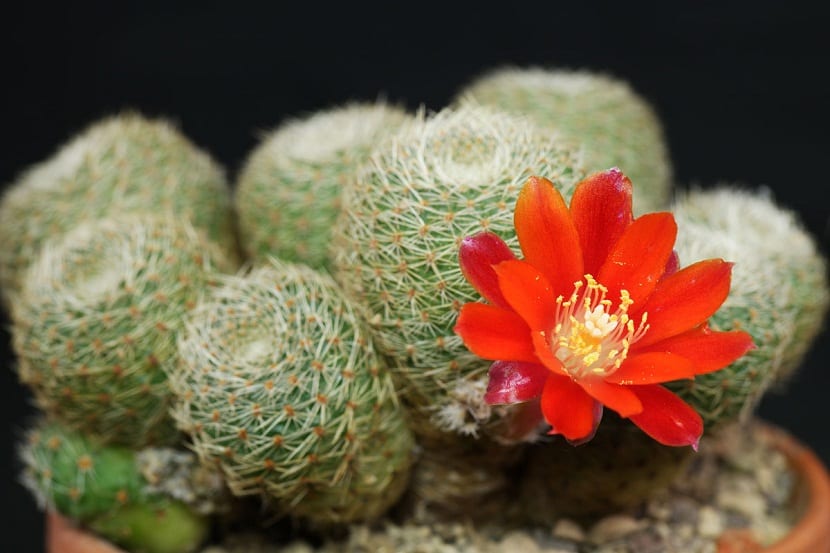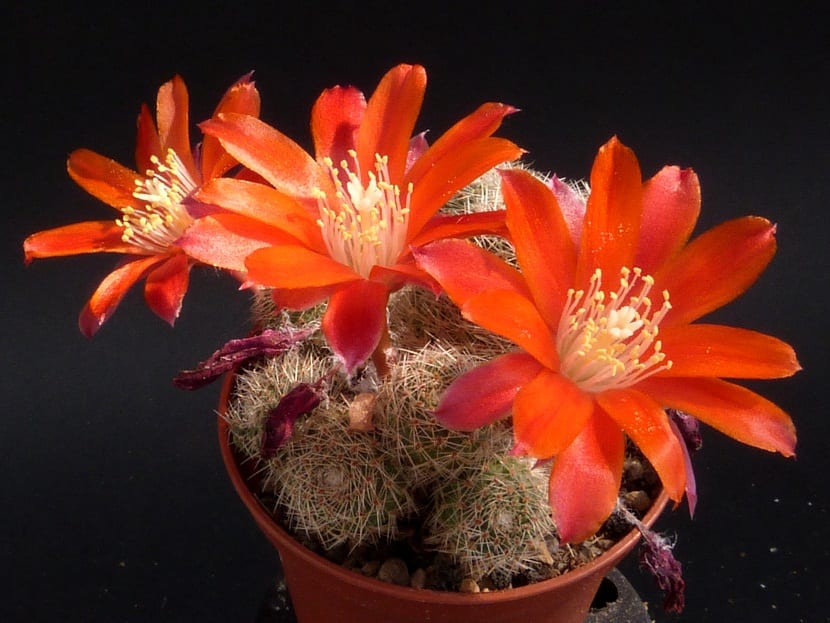
Every landscape in the world has its charm and characteristic plants of the place that can become extremely tender and charming like the heliosa rebutia. This small cactus of Bolivian origin it is really beautiful. It occurs in the extreme conditions of the mountains and Andean moors of Bolivia, Argentina and Peru. The heliosa rebutia has an appearance usually does not exceed four centimeters and during flowering are loaded with numerous orange flowers. The pots are the home where they can best show their beauty, being ideal for decorating small spaces in the windows of the floors.
Origin of Rebutia heliosa.

This is a phanerogam that belongs to the Cactaceae family of plants. It was discovered in the location called Abra Cóndor pass in Tarija, a Bolivian province that is located at an altitude of 2500 meters above sea level.
Features
Rebutia is a globose and fleshy perennial with a grayish-green color. It is covered with small thorns. The roots are also very fleshy in the form of tubers. The flowers can be orange, yellow or purple in color. The genus rebutia of the heliosa species has two varieties that are Rebutia heliosa variety cajasensis and Rebutia heliosa variety condorensis. Among the synonyms with which it is known is the scientific name Aylostera heliosa.
Farming
The cultivation of this plant has very specific needs. For being a mountain plant is used to direct sunlight and well-drained soils. Sowing them in soils with a good substrate and compost produces many flowers. The location must be in a space where the air circulates so it is ideal for balconies. By not exceeding humidity during the winter, keeping the earth a little dry, it produces more flowers in spring, it is also recommended that it be in a cool and bright place and it will stay perfectly even if the temperatures are very low.
The reproduction of the plant is done by cutting or seeds. TO is often grafted because of how difficult it is to grow. If you want to germinate the seed, the ideal temperature is between 20 and 22 ° C. The ideal months for sowing are between September and March. The pot is covered with clear plastic or glass and may take two to three weeks to germinate.
When sowing by cutting, they are cut from the Rebutia and left to dry for a week. In early spring they are placed in a pot with a wet or dry substrate and rooting hormones are added to it. The transplant is done in late winter or early spring. It is not watered until two weeks have passed. The most suitable mixture is acidic with a pH between 4,5 and 6. Gravel can be placed at the bottom to facilitate drainage.
Care

During the summer the ideal is not to expose them to excessively high temperatures. During the hottest hours of the day they should not be exposed directly to the sun. Remember to water them and that the pots have an excellent drainage. The pests to which it is prone are mealybugs that appear on the stems when there is excess moisture. They are easily removed with alcohol-soaked cotton buds. On the other hand, if the dryness is excessive then it may appear Red spider for which an miticide is recommended.
To have healthy plants the best thing is that when buying it make sure that they do not have any pests and take care of them with the perfect balance of moisture and drainage. If mealybugs are observed in the root when transplanting, the plant is cleaned well with an acaricide and submerged if necessary.
It is recommended to sterilize the substrate to prevent the plant from being infected with scyarid fly larvae. To avoid fungi it is very useful to use irrigations with fungicides. When watering the Rebutia, the ideal is to imitate the rainy periods of the year, that is, slightly during the month of April it increases from May to August, decreases between September and October and is occasional between November and March. In winter it tolerates low temperatures as long as the land is dry.
It is watered only when the substrate is dry and water with lime content should be avoided. It is preferable to use rainwater for irrigation. The fertilizer used is the commercial cactus, later the phosphate and potassium indices can be increased in the fertilizer.